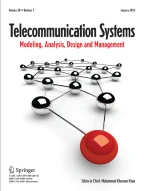Abstract
This paper reports on an African Satellite Augmentation System (ASAS) Space and Ground Segments as an integration part of Global Satellite Augmentation System (GSAS) for enhanced Traffic Control and Management (TCM) globally at sea, on the ground (road and railway vehicles) and in the air. The ASAS network can be used as solely systems for covering and providing TCM and Safety and Security service for entire African Continent and Middle East region, according to the International Maritime Organization (IMO), its Global Maritime Distress and Safety System (GMDSS) and International Civil Aviation Organization (ICAO) recommendations and requirements. Since 1995 few commercial Regional Satellite Augmentation System (RSAS) networks have been projected and developed to utilize Communication, Navigation and Surveillance (CNS) service for Maritime Traffic Control (MTC), Land Traffic Control (LTC) and Air Traffic Control (ATC), including for improved Safety and Security in all transportation systems. The proposed Space Segment of Geostationary Earth Orbit (GEO) constellation and Ground Segment of ASAS network are discussed, and areas examined where further investigations are needed. Specific issues related to these challenges are concluded and a set of solutions is proposed to maximize the availability of ASAS network capacity to the user applications.
Similar content being viewed by others
Explore related subjects
Discover the latest articles, news and stories from top researchers in related subjects.Abbreviations
- ADSS:
-
Automatic Dependent Surveillance System
- ASS:
-
Augmentation Standards Service
- ASTB:
-
African Satellite Test Bed
- ATC:
-
Air Traffic Control
- AVAS:
-
African VHF Augmentation System
- CES:
-
Coast Earth Station
- CMGC:
-
Coastal Movement Guidance and Control
- CNS:
-
Communication, Navigation and Surveillance
- CNSO:
-
Civil Navigation Satellite Overlay
- CRS:
-
Coast Radio Station
- DC:
-
Differential Corrections
- DC:
-
Differential Corrections
- DGPS:
-
Differential GPS
- DME:
-
Distance Measuring Equipment
- DOP:
-
Dilution of Precision
- DSC:
-
Digital Selective Call
- DST:
-
Department of Science and Technology
- DST:
-
Department of Science and Technology
- EGNOS:
-
European Geostationary Navigation Overlay System
- FAA:
-
Federal Aviation Administration
- GAGAN:
-
GPS/GLONASS and GEOS Augmented Navigation
- GAS:
-
Ground Augmentation System
- GBAS:
-
Ground-based Augmentation System
- GCS:
-
Ground Control Stations
- GEO:
-
Geostationary Earth Orbit
- GES:
-
Ground Earth Station
- GIC:
-
GNSS Integrity Channel
- GMDSS:
-
Global Maritime Distress and Safety System
- GMS:
-
Ground Monitoring Station
- GNSS:
-
Global Navigation Satellite System
- GRS:
-
Geostationary Ranging Station
- GRS:
-
Ground Radio Station
- GSAS:
-
Global Satellite Augmentation System
- ICAA:
-
Integrity, Continuity, Accuracy and Availability
- ICAO:
-
International Civil Aviation Organization
- IGP:
-
Ionospheric Grid Points
- ILS:
-
Instrument Landing System
- IMO:
-
International Maritime Organization
- LAA:
-
Local Augmentation Area
- LAS:
-
Local Augmentation System
- LGS:
-
Light Guidance System
- LSAS:
-
Local Satellite Augmentation System
- LTC:
-
Land Traffic Control
- LVAS:
-
Local VHF Augmentation System
- MSAS:
-
MTSAT Satellite-based Augmentation System
- MTC:
-
Maritime Traffic Control
- NDB:
-
Non-Directional Beacons
- NMS:
-
Navigation Management System
- NPA:
-
Non-Precision Approach
- NSI:
-
National Space Institute
- PA:
-
Precision Approach
- PVT:
-
Position, Velocity and Time
- RAIM:
-
Receiver Autonomous Integrity Monitoring
- RCS:
-
Radar Control Station
- RDDI:
-
Radio Direction Distance Information
- RDI:
-
Radio Direction Information
- RFP:
-
Request for Proposal
- RGIC:
-
Ranging GIC
- RR:
-
Reference Receiver
- RSAS:
-
Regional Satellite Augmentation System
- Rx:
-
Receivers
- SBAS:
-
Satellite-based Augmentation System (ICAO nomenclature)
- SDCM:
-
System of Differential Correction and Monitoring
- SMGC:
-
Surface Movement Guidance and Control
- SNAS:
-
Satellite Navigation Augmentation System
- TAB:
-
Transport Augmentation Board
- TCC:
-
Traffic Control Centers
- TCM:
-
Traffic Control and Management
- TCS:
-
Terrestrial Communication Subsystem
- TTN:
-
Terrestrial Telecommunication Networks
- VHF:
-
Very High Frequency
- VOR:
-
VHF Omnidirectional Ranging
- VPR:
-
Voice Position Reports
- WAA:
-
Wide Augmentation Area
- WAAS:
-
Wide Area Augmentation System
- WADGNSS:
-
Wide Area Differential GNSS
- WMS:
-
Wide Master Station
- WRS:
-
Wide Reference Station
References
El-Rabbany, A. (2002). Introduction to GPS. Boston: Artech House.
Grewal, M. S. et al. (2008). Global positioning systems, inertial navigation, and integration. London: Wiley.
Group of Authors (2008). Website of Leica (www.leica-geosystems.com) & NovAtel (www.novatel.com).
Group of Authors (2008). Website of EGNOS (www.esa.int), WAAS (www.gps.faa.gov) GSAS.
Group of Authors (2009). MTSAT Update, NextSAT/10 CG, Japan Civil Aviation Bureau. Tokyo: MSAS.
Ilcev, D. St. (2005). Global mobile satellite communications for maritime, land and aeronautical applications. Boston: Springer.
Ilcev, D. St. (2009). Satellite CNS for Maritime Transportation Augmentation System (MTAS). In CriMiCo conference, IEEE catalog numbers CFP09788, Sevastopol, Ukraine.
Ilcev, D. St. (2010). Maritime communications, navigation and surveillance (CNS). Durban: DUT.
Ilcev, D. St. (2010). Aeronautical communications, navigation and surveillance (CNS). Chichester: Wiley (manuscript).
Kaplan, E. D. (1996). Understanding GPS principles and applications. Boston: Artech House.
Prasad, R., & Ruggieri, M. (2005). Applied satellite navigation using GPS, GALILEO, and augmentation systems. Boston: Artech House.
Author information
Authors and Affiliations
Corresponding author
Rights and permissions
About this article
Cite this article
Ilcev, D.S. Development and characteristics of African Satellite Augmentation System (ASAS) network. Telecommun Syst 52, 121–137 (2013). https://doi.org/10.1007/s11235-011-9464-x
Published:
Issue Date:
DOI: https://doi.org/10.1007/s11235-011-9464-x
